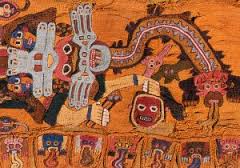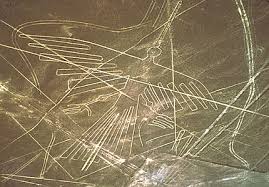Pérou, le
berceau de grandes cultures
Le
Pérou est un pays riche en histoire, qui ne se limite pas à la culture Inca ou
des cultures pré-incas. Il a un passé très lointain concurrence dans
l'antiquité et de la complexité avec d'autres peuples.
Pour commencer, brièvement
ont mentionné les cas les plus importants, qui seront ensuite présentés plus en
détail sur ces livraisons. Je vais commencer avec des cultures de la côte péruvienne.
Caral était la capitale de la
civilisation Caral, est situé à 182 kilomètres au nord de Lima, à 23 km de la
côte et à 350 mètres. Il est crédité d'une ancienneté de 5000 ans et est
considéré comme la plus ancienne civilisation en Amérique. Il est répertorié
comme un site du patrimoine culturel mondial de l'UNESCO, était un contemporain
d'autres civilisations primitives comme l'Egypte, l'Inde et la Mésopotamie.
Le Seigneur
de Sipan était
un ancien dirigeant Mochica du troisième siècle, dont le tombeau a été
découvert par l'archéologue péruvien Walter Alva en 1987. Cette découverte a
été une étape importante dans l'archéologie des Amériques parce que,
premièrement, il a été trouvé intact et sans rail pillages, une sépulture
royale d'une civilisation péruvienne avant les Incas. Le cercueil en bois dans
lequel il a été trouvé, a été le premier de son genre à être trouvé en Amérique
et a révélé la magnificence et la majesté de la seule règle et guerrier de
l'ancien Pérou trouvé à ce jour de sa découverte.
Chan Chan
("soleil brille") est une ville d'adobe précolombienne construite
sur la côte nord du Pérou par le Chimu. Il est la plus grande ville construite
en pisé d'Amérique et le deuxième dans le monde. Il est situé au nord-ouest de
Trujillo, a été déclaré site du patrimoine mondial par l'Unesco en 1986, puis
inscrit sur la Liste du patrimoine mondial en danger dans la même année. Chan
Chan est formé par neuf citadelles ou de petites villes fortifiées.
Pachacamac est un site
archéologique situé sur la rive droite de la rivière Lurin, très près de
l'océan Pacifique en face d'un groupe d'îles du même nom, contient les vestiges
de plusieurs bâtiments, datant de l'intermédiaire précoce (III siècle après JC)
à l'horizon Late (XVe siècle), où les bâtiments de la période Inca mieux
conservé (1450-1532 AD).
Il
était un ancien Oracle préhispanique essentiellement construit avec des briques
d'adobe, qui était la côte lieu de culte du dieu Pachacamac, qui a été crédité
de la création de l'univers et tout ce qu'il contient.
Les lignes de
Nazca sont
géoglyphes anciens trouvés dans la Pampas de Jumana dans le désert de Nazca;
Ils ont été dessinés par la culture Nazca et sont composées de plusieurs
centaines de chiffres allant de conceptions comme simples comme des lignes à
zoomorphe complexe, et des figures géométriques apparaissant fitomorfas tiré
sur la surface. Depuis 1994, les lignes et géoglyphes de Nasca et de Pampas de
Jumana sont patrimoine.
Paracas est une importante
civilisation précolombienne du Pérou antique qui a développé dans la péninsule
de Paracas, province de Pisco entre 700 a. C et 200 d. C. La plupart des
informations sur l'Paracas provient de fouilles archéologiques à Cerro Colorado
("Paracas-Caves ') et Warikayan (" Paracas-Necropolis ") par
l'archéologue péruvien Julio C. Tello et Toribio Mejia disciple Xesspe dans les
années 1920.
Le
Paracas pratiqué une haute qualité des textiles, la laine et le coton, ainsi
que la poterie et la vannerie décorée élaborée. La culture Paracas est le
prédécesseur de la culture Nazca avec lequel il a une affinité culturelle
évidente; pour de nombreux spécialistes, la phase finale de Paracas est phase
initiale de la culture Nazca.
Références
Caral
Señor de Sipán
Chan Chan
Pachacámac
Líneas de Nazca
Cultura paracas






























































